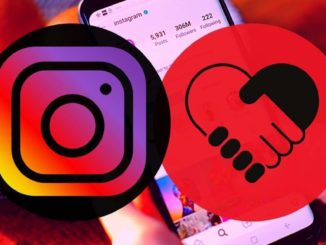
Ten Tips Any Artist Can Use to Sell Art Without Online Marketing. While it’s advisable to build an email list, a social media presence, and sell art online, you can succeed without any of it. Here are tips to help you sell art without online marketing tools.
Make A Good First Impression
Have Something Interesting to Say About Your Art
Set Realistic Goals
Describe Your Ideal Buyer
Make Connections
Ask for Orders
Get Referrals
Follow Up
Stay Positive
Have Fun
To get the results you desire, both you and your art must show well. You and your art are a package deal. Dress and present yourself as someone who is as careful with their appearance as in making their art. It sends a reaffirming visual message.
Brainstorm to Get Things Started
Brainstorm and write down everything you can think of about why you are an artist and why you love art. Please find the best thoughts and phrases from among them. Then practice weaving those bits into talking about the artwork you are showing or featuring. Work on how you say and what you say until it comes from you naturally.
What you think is mundane or uninteresting, or take for granted, others want to know when considering a purchase. Sharing is caring. It’s a gateway to better understanding and improved relationships.
If you are shy or introverted, you must learn to put on your game face and do it. First, do a search for “famous introverts” for inspiration. I believe this book is helpful. Taking the Work Out of Networking: An Introvert’s Guide to Making Connections That Count.
Use Goals As Touchstones to Guide Your Career
“If you don’t know where you are going any road will get you there. – Lewis Carroll
Start making realistic goals that are both believable and achievable. Add a timeframe to make it real. For example, “I will sell two original artworks in the next 90 days.” “I will sell six originals in the next six months.” Break down your big tasks into smaller, doable tasks. Calendar them on a to-do list, so you only have manageable tasks to complete every day. Be diligent and be ready to surprise yourself with what you get done.
Describe Your Ideal Buyer
Know who are your most ideal buyers. (It’s a significant part of the Art Marketing Toolkit Project curriculum.) Then, use every factor you can to narrow down your audience. Some determinants to consider are age, income, gender, education, marital status, religious and political affiliations, travel preferences, hobbies, careers, clubs, charitable and cultural activities, and donations. Here’s an example.
I’m looking for a 40-year-old married female with a minimum household income of $100,000. (There are about 28% of US households in this group.) She is a spiritual person, raised Catholic, and describes herself as non-denominational now.
She has conservative socialist leanings, so she’s picky about who gets her vote. She loves golfing vacations, cruising, and trips to Europe. Besides golf, she enjoys gardening, cooking, and dabbles in interior design… so you can keep drilling down until you have a defined composite.
Details Matter and Tight Targets Have Wide Concentric Circles When You Sell Art without Online Marketing
Can you see how having helpful detail on your ideal buyer will help you hone your marketing messages? The more you narrow, the stronger your message and the more powerful your advertising becomes. In addition, a tightly drawn customer avatar will reduce your lead acquisition costs.
Your marketing messages will resonate beyond your target because your buyers share interests with others who are excellent prospects. Even when you miss the bulls-eye but hit one of the concentric circles around it, you score points. Most of your messages will reach beyond your ideal buyer prospects to those slightly less inclined to buy your work. But when they hit those prospects as they are open and ready to buy art, you’ll have a winner on your hands.
Think about all the places you can visit and become known to people where you can sell art without online marketing
Nearly All Your Buyers Share Common Characteristics
Will your buyers only look like her? No, of course not. However, they will share some, if not many, of the same interests and characteristics. That means when you are looking for your ideal buyer, you will encounter others who will have a liking for your work and the means to buy it. And so, pursuing your perfect buyer has residual benefits.
Getting to Know People Is Easy When You Make It a Habit
How do you get to know people? First, you meet them in a social setting. Someone introduces you. You encounter them in a group, classroom, or gathering. You introduce yourself or ask a mutual acquaintance for an introduction. It’s easy to see if a person loosely fits your buyer persona and that you should seek an appropriate, reasonable time to get to know them. (Learning how to make connections is an important topic covered in detail in the Art Marketing Toolkit Project.)
Take the time to brush up (pun intended) on art sales techniques so when you show your art, you feel comfortable leading the sale and asking for the order.
Learn How to Make Asking For and Getting Referrals Simple
Something virtually every artist fails at doing is asking for referrals. But, rather than a painful, embarrassing situation, there are comfortable ways to make asking for referrals fun for everyone and highly effective, too. Artists in the Art Marketing Toolkit Project course learn how to make getting referrals easy and pleasant.
Keep in mind while not everyone is a prospect buy, nearly everyone is a potential referral source for you. So, people you know might not have money or prefer Western art, but they can refer abstract loving friends to your work. All you must do is show me first, so I know something, then ask to help with a few referrals. Finally, arm me with some postcards or other promo material to help me.
Stay in Touch, It’s Crucial
When you first meet someone or have an encounter with them anytime, always follow up.
Consider sending a congratulatory note when it is appropriate.
Forward a relevant article to your prospects’ interests.
Keep it short, helpful, fun, and informative.
Suggest another meeting if possible.
Be diligent. Calendar it or get a contact management program to help you.
To stay positive, keep on smiling. Use your free will. Choose to stop letting life’s circumstances overwhelm you. Choose to be happy for yourself and to help other’s find their happiness. It’s easier to stay in touch when you have in mind how you can be of service to others. It sounds selfless because it is. At the same time, there are more than enough rewards and paybacks to make being altruistic worthwhile.
Keep the Fun in Making and Selling Art Online and In-Person
Be happy. Making art is fun and often exhilarating. You can extend that sense of fun and excitement to your marketing. Remember, you get to choose how you feel and approach anything, including marketing your art. Please give it some thought. Get help if you need it. You can figure a way to make finding people to talk and communicate with about your art fun. Do you plan to make and sell art for a long time? Then it is wise advice to learn to embrace and enjoy the entire making and marketing process, so it is all fun.
“I want you to buy my art so you can own it and enjoy it! That is what gives me the most satisfaction of being an artist.”
Use that quote as a starting point to coin a phrase in your words with similar intentions. If you say it, think it, and act it, you will manifest it, and you will make it happen. For example, practice your intentions to sell art without online marketing; it will surprise you how well it works.
If you are doing things that are not fun, then you must find a new way to do them or a new way to think about them that takes away the misery, or you must stop doing the thing. Sustaining success is possible and best when you enjoy the process. You will always like some things over others, but don’t fall into the trap of hating something that is an inescapable part of getting your art to market. Never let work overrun your ability to have fun.
Make It Your Primary Sales Goal to Sell Art to Your Warm and Local Markets
Your goal is to start selling art in your local, warm, connected market. I recommend you have these things; you can begin to get sales without an email list, marketing software, a social media presence, or even a website.
In the Art Marketing Toolkit Project, we emphasize getting sales first. Then grow into the more sophisticated marketing strategies to sell art, such as list building, marketing automation, and content marketing as you progress. That’s because we know making sales gives you confidence in every aspect of your art business.
Success in Your Local and Warm Markets Foreshadows Success Everywhere
The lyric, “If you can make it there, you can make it anywhere,” is relevant to local marketing. The insights and feedback you get from your network are precious. You will use it to make informed decisions. First, you will hear firsthand what are people’s questions and concerns. Then you can use the information to address issues and hesitations before they arise. Everything you learn helps you.
As you include these how-to-sell art tips without online marketing insights across all your marketing platforms, in-person, selling art online, in print, in grant applications, and more, your results will improve dramatically. It’s how to reduce friction in your marketing funnels and improve conversions in sales and lead acquisition plans.







Be the first to comment